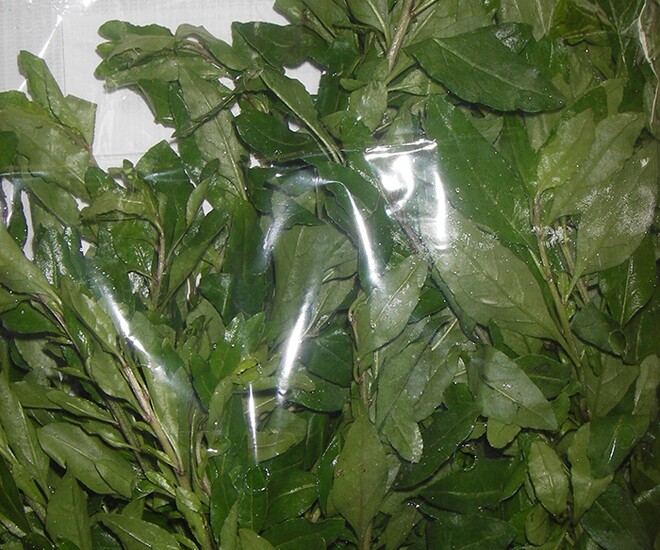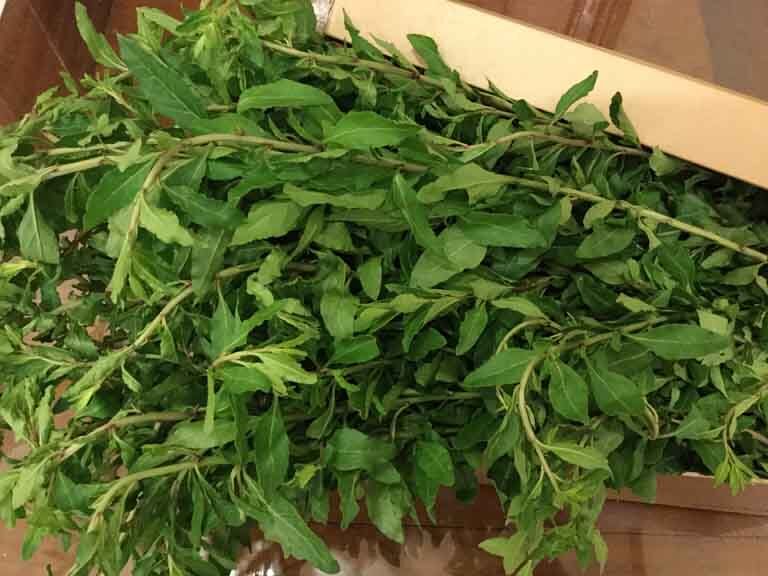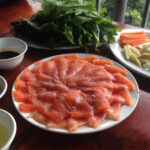Kichi vegetables, also known as Ki Tu or Cau Ky, are a unique delicacy in the districts of Lao Cai province, such as Sa Pa, Bac Ha, and Bat Sat. This vegetable used to grow wild everywhere, from fence sides to hillsides, empty lots, and roadsides. The plant has a climbing stem, grows densely, and is covered in sharp thorns, making it an excellent natural barrier to keep livestock such as water buffalo and cattle contained.

Many are surprised to discover that the young shoots and leaves of this plant make for a delicious and aromatic dish, offering a unique flavor profile unlike that of traditional vegetables. Those who have tasted Ki Chi vegetables describe their taste as mildly bitter at first, followed by a sweet and nutty aftertaste with a subtle fragrance.
During the season when the plant sprouts, the tender, lush shoots are harvested and prepared in a variety of ways: boiled and dipped in egg yolk sauce, cooked in soups with minced meat, bone broth, or shrimp, added to hot pot, or stir-fried with garlic. When cooking, the locals usually blanch the vegetables quickly to retain their distinctive flavor. Overcooking can lead to a loss of aroma and even an unpleasant, strong taste.
Ms. Loan, a resident of Lao Cai, shared: “Ki Chi vegetables are a familiar dish for us in Lao Cai. City dwellers may find it unusual, but for the locals, it’s a daily treat during the season. The Ki Chi vegetable soup is delicious whether served hot or cold. It has a slightly bitter initial taste, but the aftertaste is sweet and refreshing, and you won’t get tired of eating it.”

While Ki Chi vegetables were not traditionally sold in markets, they have now become a sought-after delicacy, with some online sellers offering them at prices as high as 75,000 VND per kilogram. However, due to their delicate nature, they are easily damaged and challenging to store and transport over long distances, limiting their availability. Restaurants and eateries in Sa Pa have also started including Ki Chi vegetables in their menus to offer a unique local experience to their guests.
The owner of a restaurant in Sa Pa commented: “Our visitors love Ki Chi vegetables, and many ask me to buy some for them to take back to Hanoi or Ho Chi Minh City. This vegetable goes exceptionally well with fresh shrimp or garlic stir-fry, receiving praises from our diners. However, due to its perishable nature, guests can only take a small amount with them, mostly enjoying it on the spot.”
Beyond its unique flavor, Ki Chi vegetables are also valued for their medicinal properties and health benefits. Local people often use Ki Chi vegetables as a herbal remedy to cool the liver and relieve heat during hot seasons, especially after consuming rich meals or drinking alcohol.

Ngoc Anh, a visitor from Hanoi who tasted Ki Chi vegetables during a work trip, shared her experience: “I have a soft spot for bitter-tasting vegetables, so I instantly fell in love with Ki Chi vegetables when I first tried them. After that, I bought two kilograms from the Sa Pa market to bring back to Hanoi for my family to enjoy.”
The Township Hailed by Korean Media as “Switzerland of Vietnam”: A Breathtaking Escape that’s Beckoning Visitors this New Year
Sa Pa, nestled at the foot of the majestic Hoang Lien Son mountain range and a mere 5-6 hour drive from Hanoi via a modern highway, has been hailed by the Korean media as the “Switzerland of Vietnam”. This idyllic destination boasts year-round appeal, not only for its breathtaking rice terraces during the harvest season but also for the allure of its myriad other attractions.
The Ultimate Northwest Mountain Passes: A Breathtaking, Otherworldly Adventure and a True Rider’s Challenge
Unveiling the mysteries of Northwest Vietnam, this journey is not just about exploring unique ethnic villages but also about conquering the four majestic mountain passes. From the mighty “King of Passes”, O Quy Ho, to Ma Pi Leng, the gem of Ha Giang, each pass has its own captivating stories and breathtaking sceneries to offer.






































